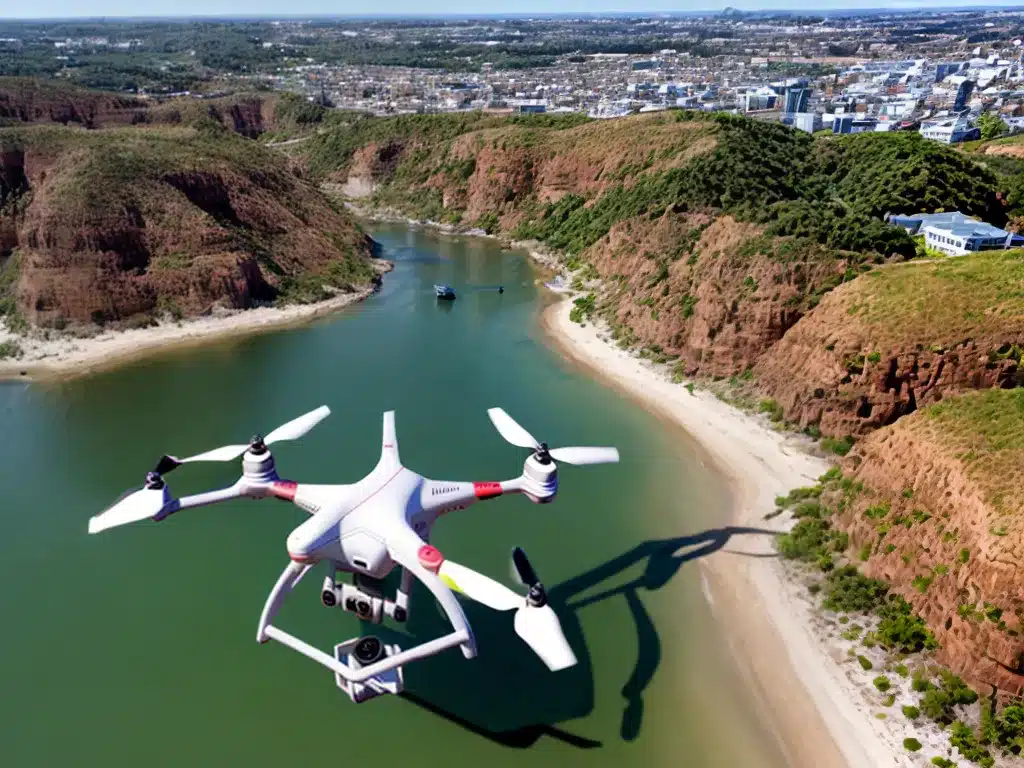
Introduction
Drones have become incredibly popular over the last decade. In 2024, drones will be even more advanced and have expanded use cases for both recreational and commercial purposes. As an avid drone enthusiast, I’m excited to share my insights on using drones for business and fun in the coming years.
Recreational Drone Use
Drones started as hobbyist devices, and recreational use remains a major drone application today. Here are some of the ways drones can be used for fun in 2024:
Aerial Photography and Videography
-
Drones equipped with high-quality cameras can capture stunning aerial photos and videos. Advancing camera and gimbal stabilization technology will allow smooth footage and crisp images.
-
Drones like the DJI Mavic 3 with Hasselblad cameras already produce professional-grade results. Future drones will have even better cameras and sensors.
-
Capturing unique perspectives of landscapes, cityscapes, events and more that aren’t possible from the ground.
Drone Racing
-
Drone racing has grown into an exciting sport, with races through obstacle courses at high speeds.
-
New drones in 2024 will be even faster, with top speeds over 90 mph possible. Lightweight frames and powerful motors enable insane maneuverability.
-
First-person-view (FPV) drone racing gives an immersive piloting experience using goggles that display a real-time video feed.
Aerial Surveillance and Mapping
-
Drones can scout ahead or access hard-to-reach areas and provide an aerial view. Useful for hunting, surveying land, inspecting roofs, and more.
-
Onboard sensors, scanning lasers and mapping software allow drones to generate detailed 3D maps and models.
Exploration and Proximity Flying
-
Using drones to explore areas and fly close to structures and terrain is an engaging way to hone piloting skills.
-
Obstacle avoidance sensors and automated flight modes enable even amateur pilots to fly smoothly.
Drone Gaming and Simulation
-
Advancing gaming tech will allow extremely realistic drone simulations and drone-focused games.
-
Lifelike graphics, accurate physics, and immersive FPV views make you feel like you’re actually flying.
Commercial Drone Applications
Drones are also being rapidly adopted for a variety of business use cases. Commercial drone applications in 2024 include:
Infrastructure Inspection
-
Safely inspecting bridges, cell towers, wind turbines, pipelines and other infrastructure from the air instead of requiring rope access.
-
Thermal sensors can identify faults and damage not visible to the naked eye. Detailed photogrammetry models help document asset condition over time.
-
More efficient and safer than traditional methods. Especially useful for assets that are difficult or dangerous to access on the ground.
Construction & Mining
-
Aerial surveying and digitization of construction and mining sites to track progress and ensure compliance.
-
3D mapping for volumetric measurements and stockpile management. Thermal imaging to identify leaks, gaps in insulation, hot spots on equipment, and more.
-
Improves project oversight and coordination between stakeholders. Enables clash detection between models and real-world progress.
Agriculture
-
Multispectral sensors on drones allow farmers and viticulturists to survey crops and vineyards for health and stress factors.
-
Useful for early disease and irrigation issue detection, determining optimum harvest times, and selective spraying of required areas.
-
Significant efficiency benefits and cost savings compared to manned aircraft or manual field surveys.
Public Safety and Emergency Response
-
Equipped with loudspeakers and spotlights, drones can inspect disaster areas, search for victims, and disseminate warnings in hazardous situations like fires.
-
Thermal sensors detect heat signatures of people and identify the location of hazardous hot spots.
-
Rapid aerial overviews improve situational awareness and emergency response coordination. Safely reach places that manned aircraft can’t.
Media Production
-
The film, TV and advertising industries make extensive use of drones for establishing shots, tracking shots, intricate camera moves and getting unique angles.
-
More affordable camera gimbals and stabilizers allow smooth footage from drones without expensive professional rigs.
-
Quieter drones like the DJI Mavic 3 Cine version don’t disturb actors and live animals on set.
Challenges Facing Drone Growth
While drones will unlock tremendous new possibilities in 2024, there are still challenges to address:
-
Regulatory limitations on where drones can fly and what they can carry continue to tighten in many regions.
-
Privacy concerns over drones with cameras surveilling public and private property. Mechanisms to preserve privacy without limiting utility are needed.
-
Safety and security risks like collisions with manned aircraft or intentional drone attacks. Better counter-drone defenses are required.
-
Short battery life remains a limitation. New battery chemistries could enable longer flight times. Lighter materials will also help extend endurance.
-
Weather resistance of consumer drones remains relatively poor. Waterproofing and the ability to operate in high winds/cold will expand use cases.
-
Autonomous flight with avoidance of obstacles is still imperfect. More progress in computer vision and depth sensing is required.
The Future is Exciting!
Drones are an incredibly dynamic technology with new capabilities materializing constantly. As an avid drone pilot, I can’t wait to put the latest drones through their paces in 2024! It’s sure to be an exciting time for both recreational and commercial drone use. The possibilities are endless, limited only by imagination and regulatory constraints. With careful progress, drones are poised to transform many industries while also delivering thrilling new hobbies and perspectives. The future of drones in 2024 and beyond is bright!












